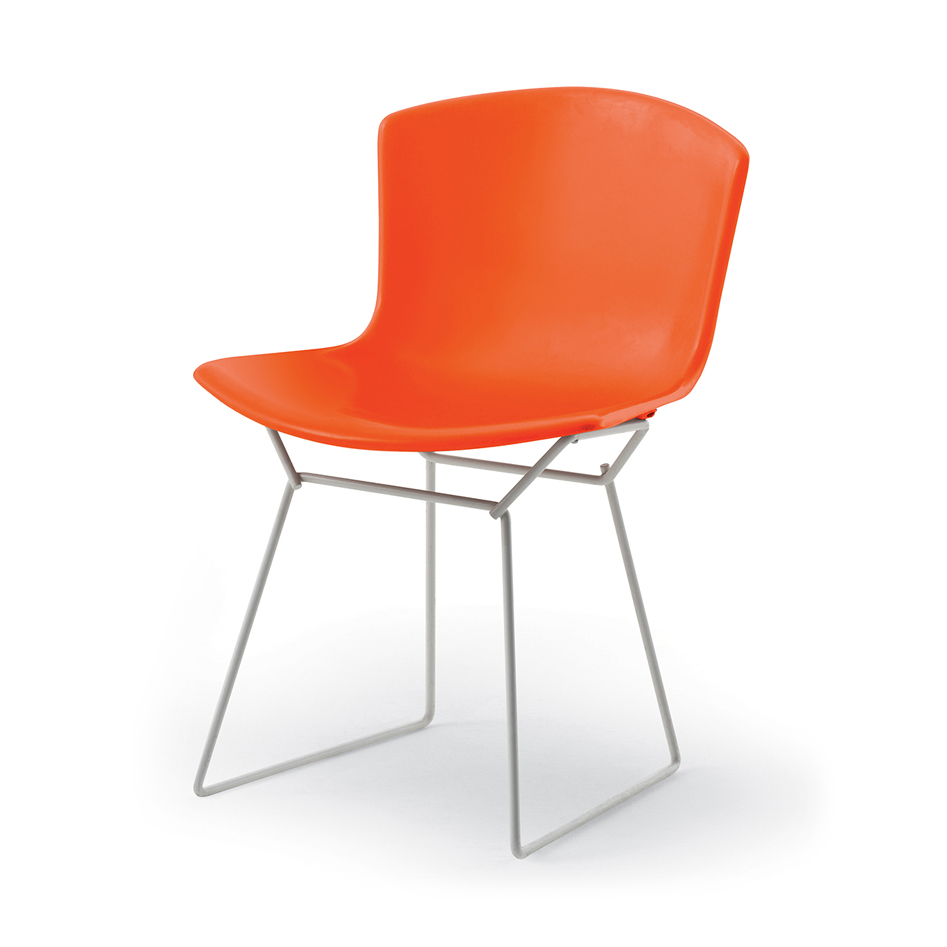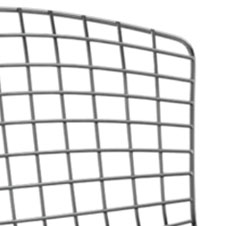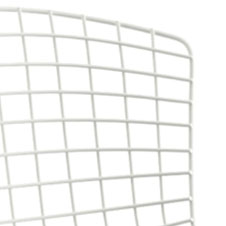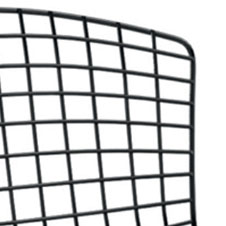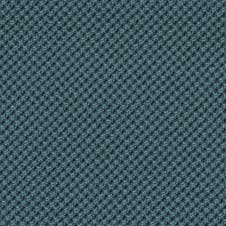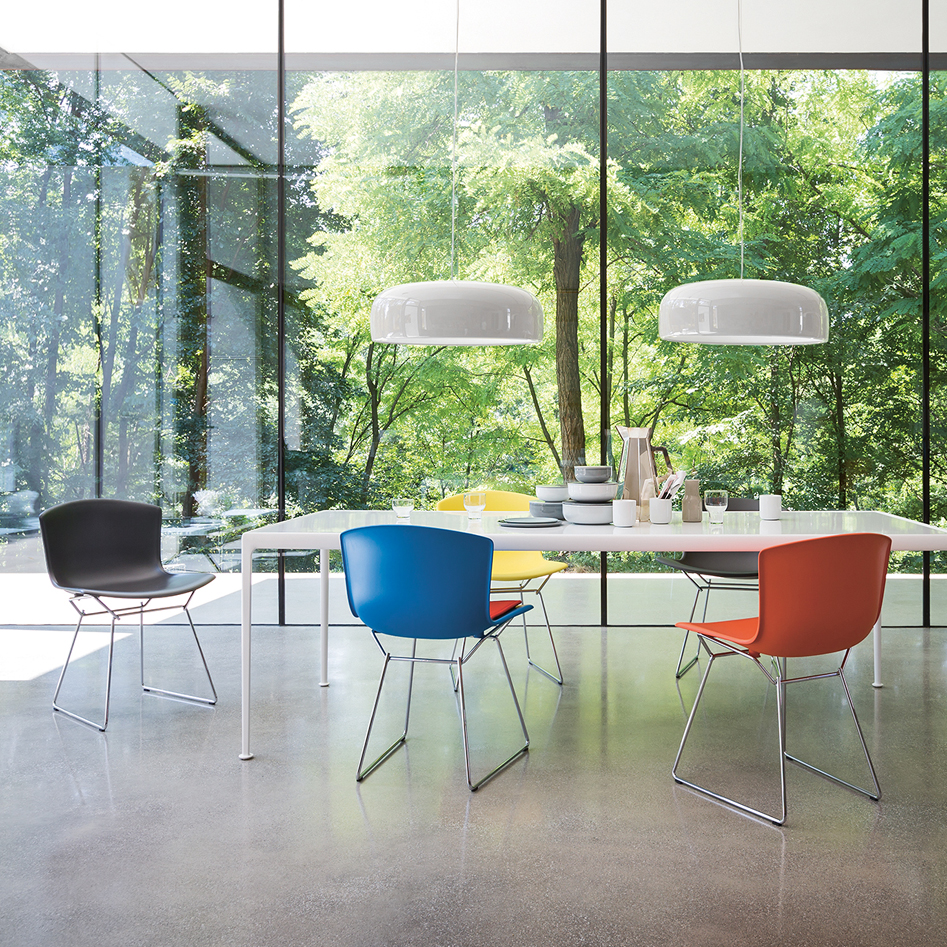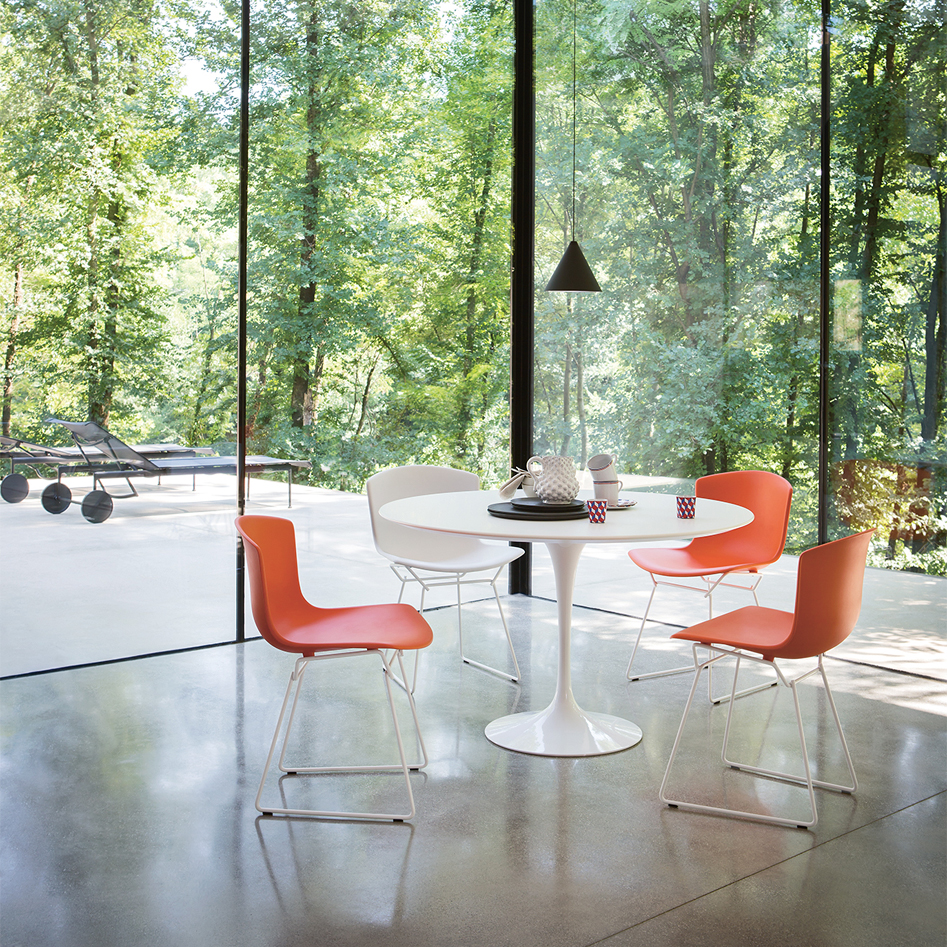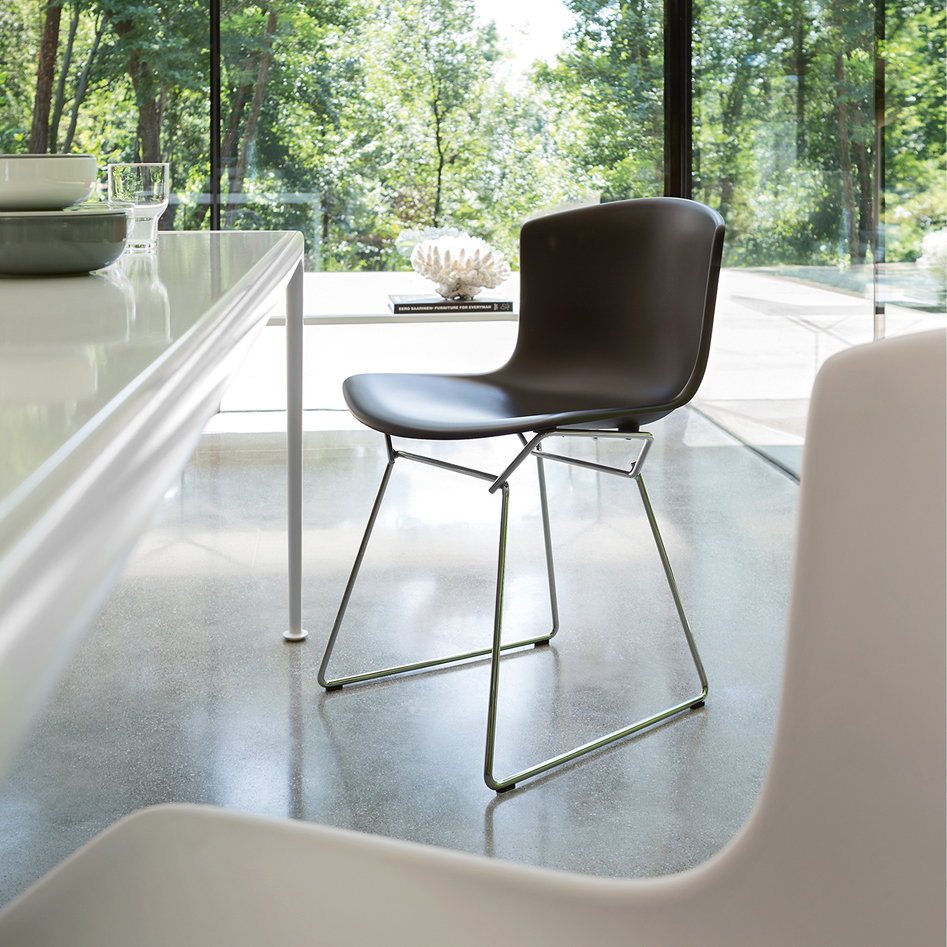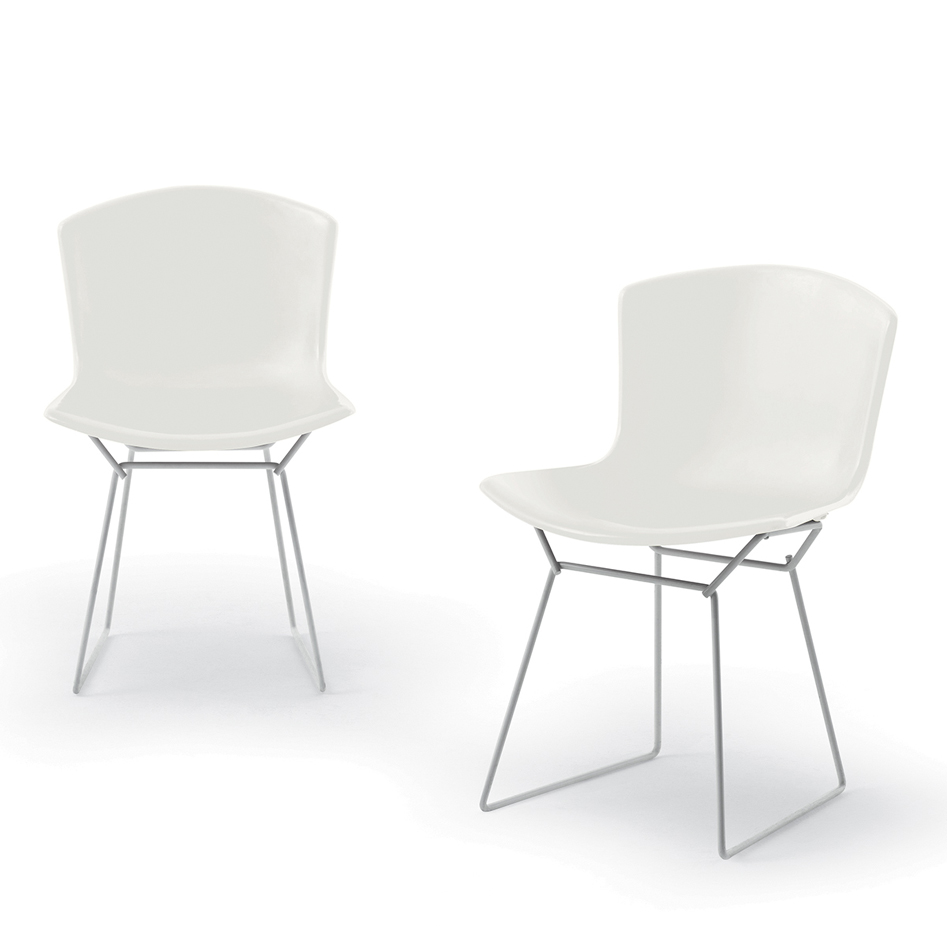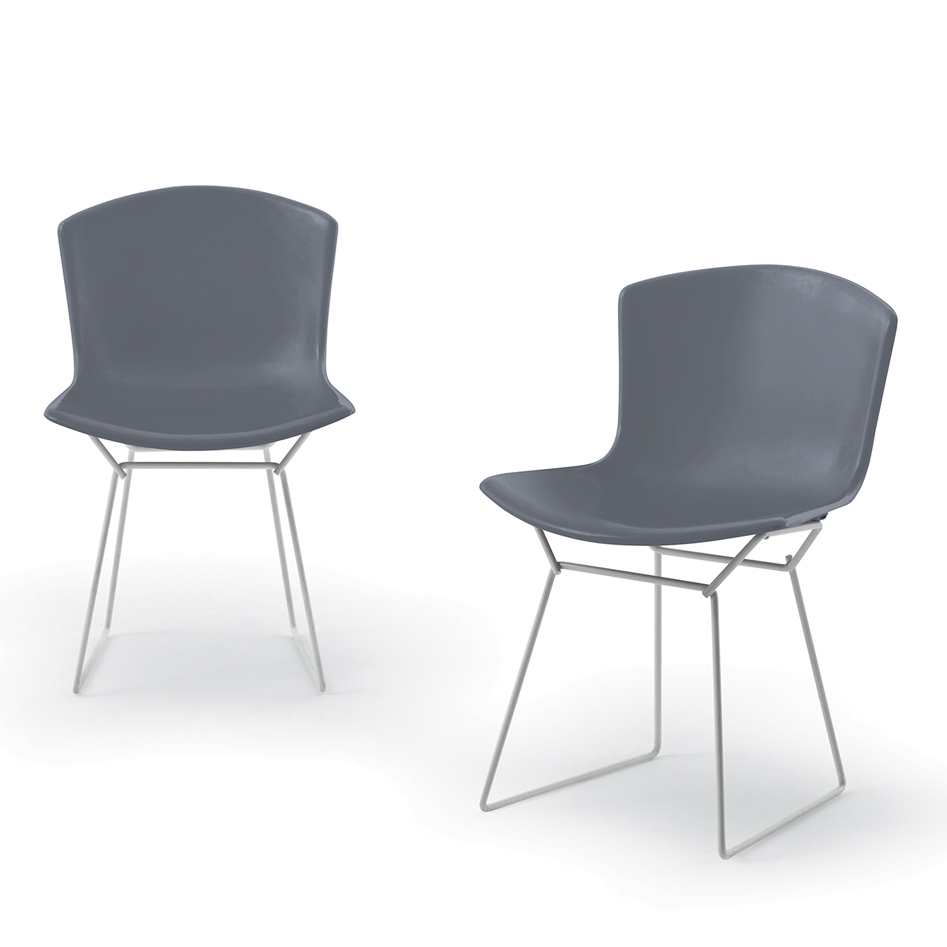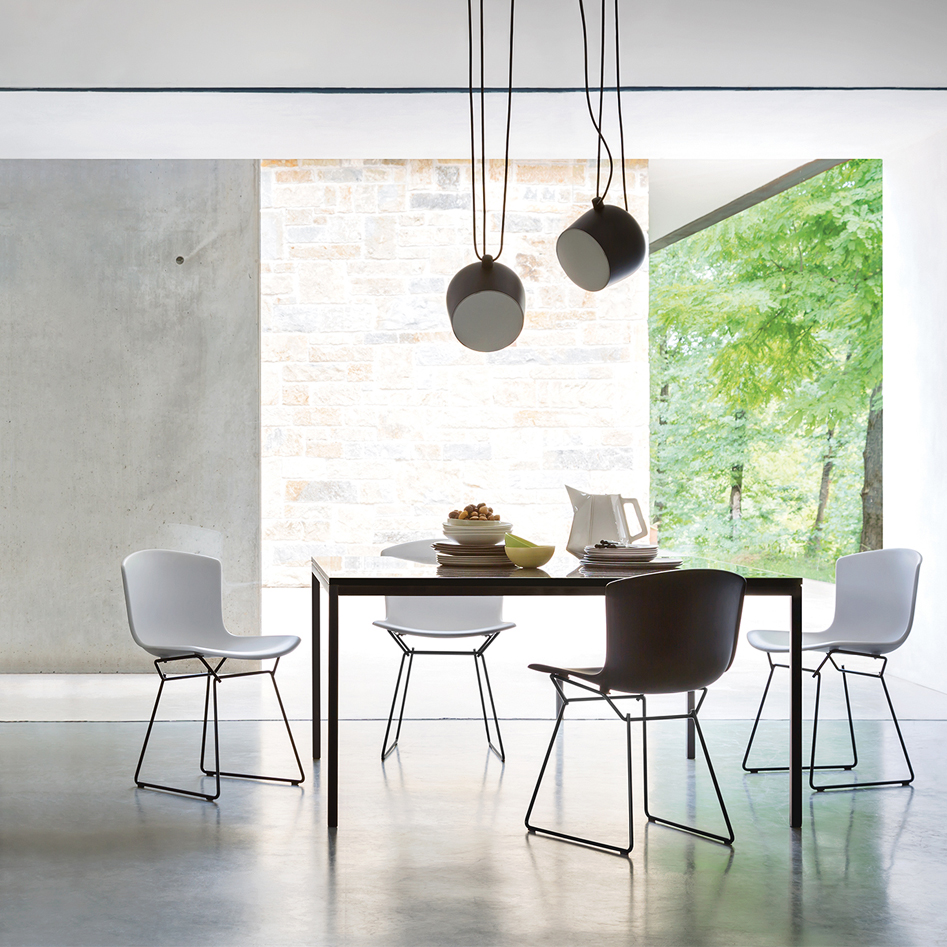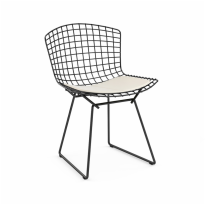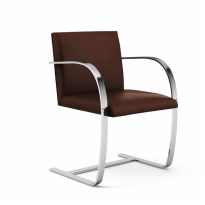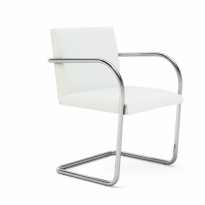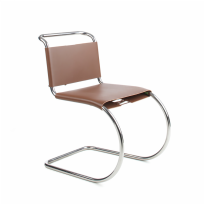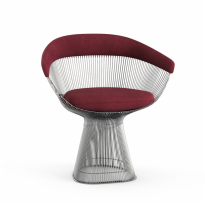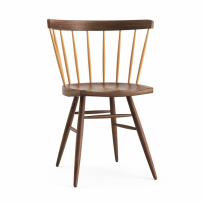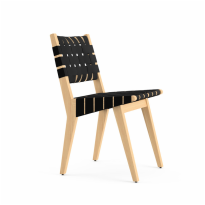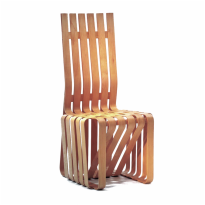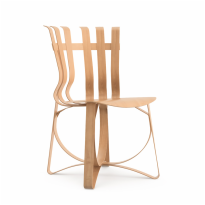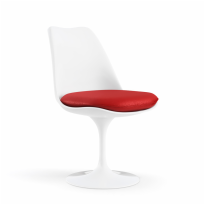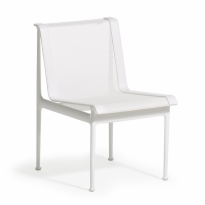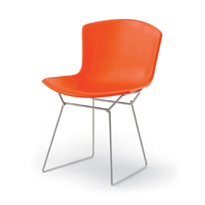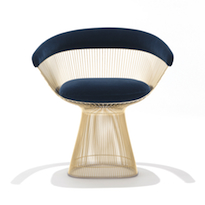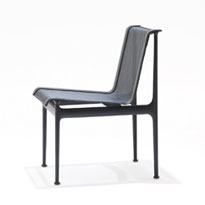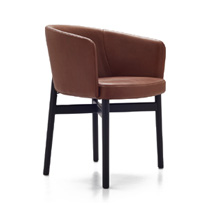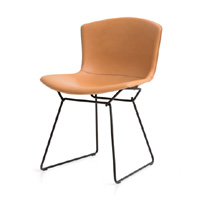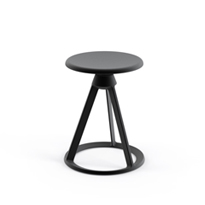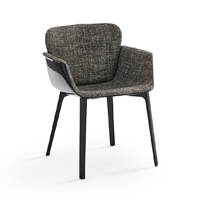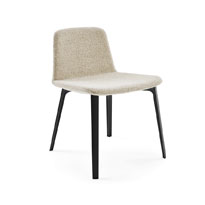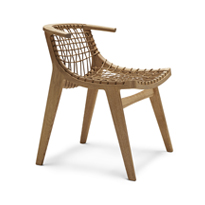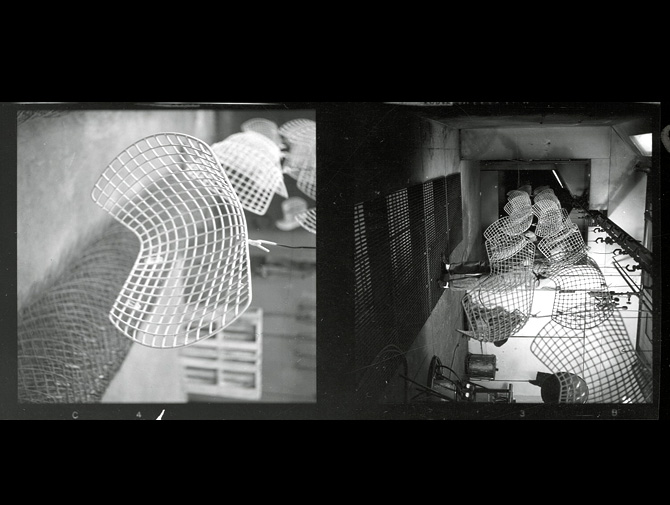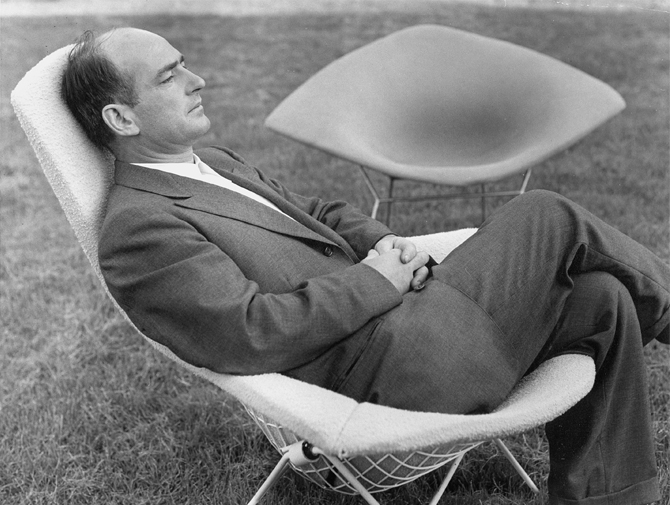To celebrate the centennial of the designer’s birth, at the Salone del Mobile 2015 the classic Side Chair will be presented in a new version with chromium-plated steel rod structure and a polypropylene seat in different colors, in a special “Anniversary Edition.” A modern, colorful take on an inimitable creation, faithfully replicating its unique, linear design, the new chair stands out for its extremely comfortable seat and its way of adapting to the widest range of contexts, from residential to contract. The stool is also available in this new version.
In 1950 Hans and Florence Knoll offered the sculptor Harry Bertoia a chance to freely apply his artistic concepts to the creation of a chair to include in their collection, still in its early phase. “We decided to let him work in total freedom, to avoid obstructing the creativity that already set him apart in the panorama of designers at the time,” Florence Knoll recalled. Bertoia, in constant pursuit of perfection, worked by hand, trying out many variations, with the aim of shaping space while utilizing a light, airy structure. Thanks to an almost artistic procedure, different seats were created, each with its own specific function: from the Side Chair and Stool for the dining area to the Diamond and Large Diamond armchairs, all the way to the lounge model, the Bird Chair, by way of the Asymmetric model. Each had its own natural and sculptural form. The Bertoia Collection (1952) is still available in a wide range of coverings, aptly suited to the innovative furnishings Harry Bertoia invented with such ability and artistic intelligence.
